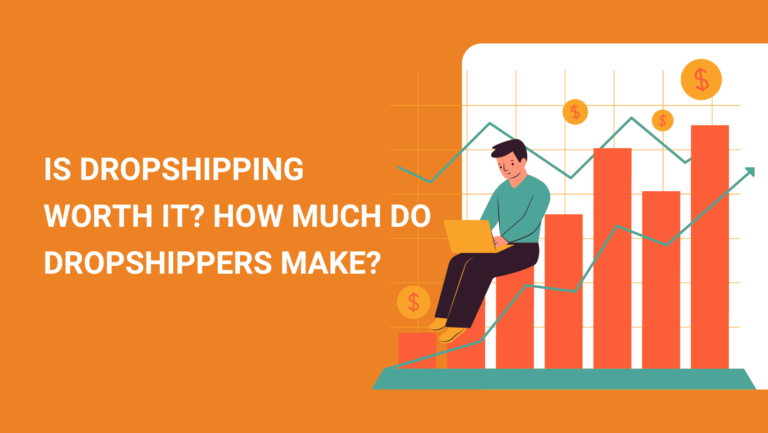Dropshipping is a popular eCommerce model where the store owner doesn’t keep inventory. The supplier directly ships all the products so it requires a relatively low start-up investment.
But this also makes beginners wonder how much do dropshippers make?
Well, the answer to this question isn’t as black and white. It depends on a variety of factors, including your marketing strategy, product choice, and more.
In this article, we’ll dive deep into the earning potential of dropshipping and some factors that affect its profitability.
Let’s get right into it!
Key Takeaways
- Dropshipping can be a profitable business model with varied earnings depending on several factors.
- High-ticket dropshipping offers higher profit margins, whereas low-ticket involves quicker but smaller sales.
- Effective strategies and an understanding of market trends are vital for maximizing dropshipping earnings.

Two Types of Dropshipping
When exploring the dropshipping business model, you’ll find two main types: low-ticket dropshipping and high-ticket dropshipping. Each type has different profit margins and products associated with it.
| Low-Ticket Dropshipping | High-Ticket Dropshipping |
| Lower price products | Higher price products |
| High volume sales | Lower volume sales |
| Thinner profit margins | Larger profit margins |
| Extensive market research | More selective market research |
| Risk of market saturation | Less risk of market saturation |
Low-Ticket Dropshipping
Low-ticket dropshipping involves selling more affordable products at larger volumes. The goal here is quantity over individual sale value.
The profit margins for low-ticket items are typically slimmer, often ranging from 10% to 30%.
Despite the lower profit per item sold, the product turnover rate can balance out your overall earnings. Your dropshipping store’s success depends on effectively driving traffic and converting sales.
A chief advantage of this model is that it allows for higher volume sales. The products are easier to sell due to their lower cost, which can mean more frequent purchases.
However, keep in mind that you will need to sell a much higher quantity to generate significant profit.
High-Ticket Dropshipping
High-ticket dropshipping involves selling more expensive items which typically leads to a higher profit margin per sale. You focus on fewer, high-value sales rather than a high volume of lower-priced items.
It’s important to conduct thorough market research to identify products that not only have a high perceived value but also aren’t in a saturated market.
Items in high-ticket dropshipping range from electronics to home appliances, and even furniture. The key is finding products that consumers are willing to invest in.
Prices might vary significantly, with some items priced between $50 and $600, and profit margins have the potential to soar up to 60%.

However, you won’t just pick a pricey product and start selling. To succeed, you must have a keen grasping of your target market. Knowing customer needs can help differentiate your store from competitors.
Remember that while the rewards can be substantial, high-ticket dropshipping also comes with its challenges. Sales volumes might be lower since purchasing decisions can take longer and the competition for quality products is tight.
How Much Do Dropshippers Make on Average?
When you’re exploring the realm of dropshipping, one key question you might have is, “How much money can I make?” The average dropshipping income varies widely, but let’s break it down to get a clearer picture.
Amazon Dropshipper
The average dropshipping income for those selling on Amazon ranges widely. If you’re new to the scene, you might find that starting earnings hover between $1,000 to $2,000 monthly.
More experienced dropshippers who have honed their product selection and marketing strategies can see monthly earnings skyrocket, sometimes hitting as high as $50,000.
Here’s a succinct snapshot of what you might expect:
| Experience Level | Potential Monthly Earnings |
| Beginner | $1,000 – $2,000 |
| Intermediate | $5,000 – $10,000 |
| Advanced | $10,000 – $50,000+ |
Keep in mind, these figures are not guarantees but averages derived from a range of individuals’ earnings.
While some dropshippers have indeed struck gold, others may not see substantial profits due to competition, market saturation, or inadequate marketing efforts.
Amazon does require an Amazon seller account, which incurs its own costs. The Professional plan is $39.99 per month, and the Individual plan is $0.99 per sale, so it’s important to factor these expenses into your budget.
To excel as an Amazon dropshipper, it’s essential to diligently research products, learn effective marketing strategies, and understand Amazon’s policies.
eBay Dropshipper

Embarking on an eBay dropshipping venture can be an exciting journey, where the potential for turning a profit hinges on your strategic approach. If you’re curious about average dropshipping income on eBay, here’s what you need to know.
Firstly, eBay dropshippers make a diverse range of incomes. There are those who manage to build substantial businesses, while others may find the market challenging.
Dropshipping income is not fixed; it varies based on your investment, the products you choose, and the strategies you employ.
A look at the numbers reveals that average dropshipping income varies widely. Some dropshippers may earn as little as a few hundred dollars per month, though established sellers can bring in several thousand dollars or more.
It’s important to note that these figures can be impacted by several factors, including eBay fees, the cost of goods sold, and the competitiveness of the market.
The table below illustrates a simplified breakdown of potential monthly earnings for an eBay dropshipper:
| Monthly Sales | eBay Fees | Cost of Goods Sold | Net Profit |
| $5,000 | $700 | $3,000 | $1,300 |
| $10,000 | $1,400 | $6,000 | $2,600 |
| $20,000 | $2,800 | $12,000 | $5,200 |
Please note that these figures are hypothetical and will vary depending on each individual seller’s circumstances.
In terms of a dropshipping salary, it’s akin to running your own business; you’re not guaranteed a fixed paycheck.
Your earnings will reflect your ability to choose the right products, optimize your listings, and manage your operations efficiently. To maximize profits, smartly navigate through eBay’s fee structure and consider store subscriptions to cut costs.
Shopify Dropshipper
On Shopify, dropshippers make on average, a range that can fluctuate widely based on various factors.
Newcomers might see earnings around $200 to $3000 per month as they learn the ropes and begin to establish their stores. As your experience and store’s strategy improve, this can dramatically increase.

For instance, Shopify success stories showcase dropshippers who have scaled their operations to net $2,000 to $20,000 or more per month.
| Experience Level | Average Monthly Earnings |
| Beginner | $200 – $3,000 |
| Experienced | $2,000 – $20,000+ |
To achieve such figures, consider honing in on a niche or high-ticket items, as specialization tends to correlate with higher income.
Factors That Can Impact Your Dropshipping Earnings
When you run a dropshipping store, your profits can be influenced by various factors. Familiarizing yourself with these can help you optimize your earnings.
1. Niche and Product Choice
Choosing the right niche—one with low competition—is like picking the perfect spot for a shop in a bustling marketplace. Products that stand out can catch the buyer’s eye, but they also need to promise good profitability.
Market research here is your best friend. You need to scrutinize trends, understand customer needs, and track what flies off the virtual shelves.
For example, the apparel category is a potential goldmine, with items like women’s clothing and sportswear often showing strong sales.
Let’s talk numbers: in particular niches, such as baby products and car accessories, the market is expansive. The baby care industry alone was worth $215.13 billion in 2022 and is set to grow even further.
With cars, a colossal market worth $498.9 billion in 2022 is expected to soar to $821.7 billion by 2030. These figures hint at lucrative possibilities if you can tap into the customers’ needs and preferences.
Product selection plays a vital role:
- High-demand, low-competition products can lead to a substantial profit margin.
- Products that align with customer interests have the potential to sell more.
2. Product Costs
In the dropshipping business model, the cost of goods sold (COGS) is crucial as it directly impacts your dropshipping profit margin. The COGS represents how much you pay your suppliers for the products you sell.
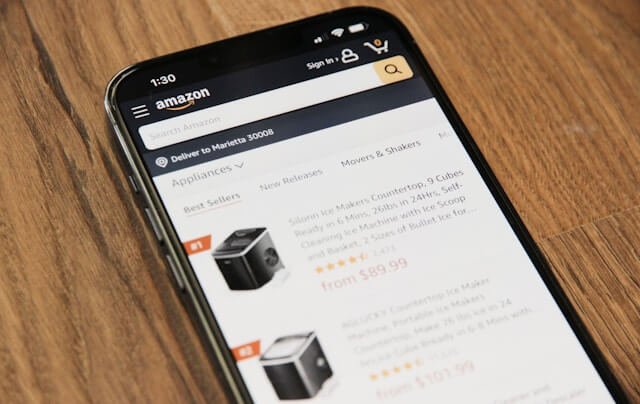
Here’s a breakdown of how product costs work in dropshipping:
- Wholesale Price: This is what you, the dropshipper, pay for the products purchased from suppliers. It’s your base product cost.
- Additional Costs: These might include shipping fees, customs duties, and any other expenses incurred to get the product from the supplier to your customer.
The lower your product costs, the greater your potential profit margin. Let’s put this into perspective with some numbers:
| Product Retail Price | Wholesale Price | Additional Costs | Total Product Cost | Profit Margin |
| $30 | $10 | $5 | $15 | 50% |
Profit Margin is calculated by subtracting the total product cost from the retail price and then dividing that number by the retail price.
In the example above, a $30 retail price minus the $15 total product cost leaves a profit of $15. When divided by the $30 retail price, you get a profit margin of 50%.
Remember, a high profit margin doesn’t always mean high overall profits; it’s essential to balance costs with customer demand. By keeping a close eye on product costs and negotiating with suppliers for better prices.
3. Store Website
Creating a dropshipping store website is crucial to your online business. It’s not just a place to showcase your products, but also a pivotal tool in the order fulfillment process.
Customers who visit your store expect an intuitive design, smooth navigation, and a secure checkout process.
Essential Components
- Design: A clean, attractive design can help capture visitors’ attention.
- Navigation: Easy navigation improves the shopping experience.
- Product Pages: Detailed descriptions and high-quality images are a must.
- Checkout: A straightforward and secure checkout keeps customers returning.
Maintenance and Apps
Regular maintenance is key to ensure your dropshipping store runs smoothly. This includes updating product listings, analyzing site traffic, and optimizing for SEO.
Integrating apps into your site can automate parts of your business. For instance, apps for inventory management can sync with your suppliers to keep product availability updated in real-time.
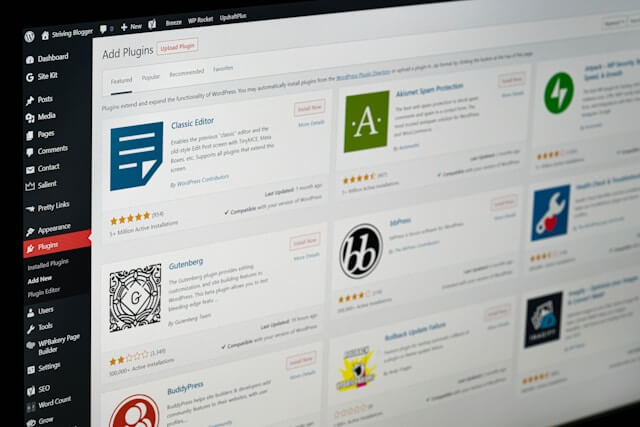
Impact on Profits
Your website acts as your storefront, so investing in its functionality and aesthetics is essential. Customers are more likely to purchase from a store that looks professional and runs without hitches.
Your website’s ability to attract and retain customers directly impacts your earnings. Moreover, the effectiveness of your order fulfillment process, which includes how your website handles orders, can make or break the customer experience.
An optimized store translates to reduced bounce rates, higher conversion ratios, and, ultimately, increased revenues.
4. eCommerce Platform Restrictions
When venturing into a dropshipping business, you need to be aware of the different restrictions set by various eCommerce platforms. Each platform has its own set of rules that could affect how much you, as a dropshipping business owner, can earn.
Amazon, for example, is known for having stringent policies for sellers using their platform. As you sell on Amazon, you’ll encounter various fees, such as referral fees and monthly subscription costs.
These fees are important to consider since they can take a chunk of your profits.
Dropshippers on Amazon might see their earnings vary significantly, ranging anywhere from $1,000 to $50,000 per month, depending on how they navigate these fees and manage their listings.
eBay, on the other hand, provides more flexibility compared to Amazon. It still charges fees, like insertion fees and a final value fee, but dropshippers often find the platform to be less restrictive.
This can potentially lead to a different earning potential, where the freedom can translate into increased sales and, therefore, higher profits.
Lastly, platforms like Shopify or WooCommerce are renowned for giving sellers a high degree of control and fewer restrictions.
However, they require more hands-on work in terms of setup and marketing. Remember, the less restrictive the platform, the more responsibility you have to drive traffic and sales.
Understanding these restrictions and fees is crucial. The more you know them, the better you can strategize to maximize your earnings.
5. Supplier Reliability

Supplier reliability is key to your success when you’re managing a dropshipping business. Your suppliers’ performance directly impacts your product quality, delivery times, and overall customer satisfaction. Let’s break this down a bit.
Firstly, supplier consistency is crucial. You need suppliers who deliver products that are consistently high in quality. If a customer receives a low-quality product, it’s your reputation on the line, not just the supplier’s.
Next, consider product availability. Your suppliers must have a steady stream of products. Nothing alienates customers more than placing an order only to find out it’s out of stock. This can hinder your income potential, as availability directly relates to sales volume.
Shipping times also play a critical role. In our fast-paced world, customers expect quick deliveries. Delayed shipments due to unreliable suppliers can harm your business’s profitability.
Here’s what you need to remember:
- Choose suppliers with good reviews for consistent quality.
- Verify their inventory levels regularly.
- Set clear expectations about shipping times.
By ensuring the reliability of your suppliers, you’re more likely to provide excellent service to your customers, fostering repeat business and referrals, which are all essential for boosting your dropshipping income.
6. Payment Gateways and Processing Fees
When you’re operating a dropshipping business, payment gateways are crucial for transaction processing, but they come with various processing fees which can impact your total revenue.
Choosing the right payment gateway can mean the difference between a decent profit margin and razor-thin earnings.
Examples of Popular Payment Gateways:
- PayPal
- Amazon Pay
- Shopify Payments
- Stripe
To better understand the dent these fees might make in your earnings, it’s important to look at the numbers.
For instance, a gateway like Amazon Pay typically charges a transaction fee of 2.9% + $0.30 for U.S. domestic transactions and 3.9% + $0.30 for cross-border transactions. These fees can quickly add up, especially if you have a high volume of sales.

Payment gateways often have differing fee structures. For example, you might encounter:
- Fixed Monthly fees: A set fee paid each month regardless of transaction volume.
- Per Transaction fees: A fee incurred with each transaction, sometimes as a flat rate plus a percentage of the sale.
A payment gateway impacts your cash flow because a fee is deducted from each sale. The key is to consider these costs when pricing your products and projecting your potential profitability.
Moreover, certain payment gateways offer fraud protection, which can help safeguard your earnings by minimizing the risk of chargebacks — when a customer disputes a charge, and you potentially lose both the product sold and the income from that sale.
To maintain a healthy revenue stream, you’ll need to account for these extra bites out of your profit.
Comparing gateways and choosing the one with the most favorable terms for your business model and sales volume can optimize your take-home pay.
Additionally, some gateways provide analytics and data that can help you better understand your sales patterns and customer behavior.
Remember, every penny counts when determining product prices and forecasting your financials, so factor in these processing fees to get a clear picture of your potential earnings in the dropshipping game.
7. Marketing Strategy
Your marketing strategy is the blueprint that guides how you’ll attract customers, what you’ll sell to them, and how you’ll keep them coming back.
To kick off, market research is your starting block. You need to know who your customers are, what they want, and how much they’re willing to pay.
Gather data about your competitors, study market trends, and identify gaps you can fill. It isn’t just about knowing your market but finding your unique place within it.
Next, explore different marketing channels. They’re the paths you use to reach potential customers. For instance, leveraging meme pages on Instagram can boost your brand’s visibility among wider, younger audiences because of the viral power of memes.
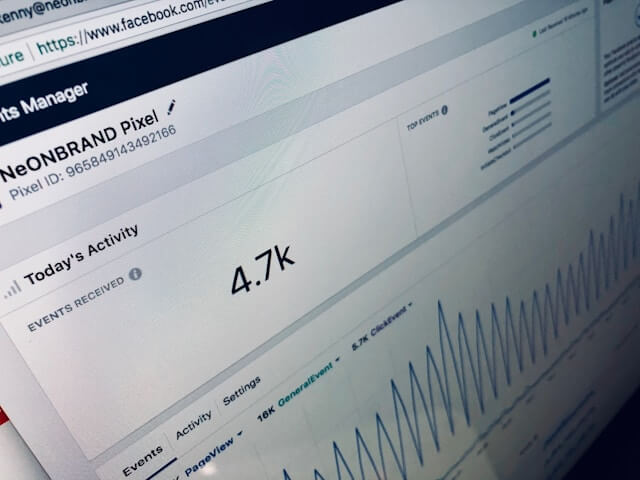
Investing in paid ads is another route. Whether it’s Facebook ads or Google Adwords, paid platforms can skyrocket your reach effectively.
But remember, while these ads can attract traffic, they also require a part of your budget, so ensure your investment brings worthwhile returns.
Consider the following marketing avenues:
- Social Media: Engage with your audience through platforms they frequent.
- SEO: Optimize your website and content for search engines to increase organic traffic.
- Email Marketing: Build a subscriber list to keep your customers informed and interested.
The goal is to convert your marketing efforts into sales and, eventually, profit. The more targeted and efficient your marketing strategy, the higher the potential for your dropshipping business to thrive.
8. Shipping Costs
Shipping costs aren’t just numbers added on a bill; they’re pivotal in deciding your pricing strategy and can make or break your business.
First, let’s explore direct costs. These are the fees you pay to shipping companies to deliver products from suppliers to customers. They vary based on your packages’ weight, dimensions, and destinations.
Now, remember that as a dropshipper, you don’t hold inventory, so you rely on suppliers to ship directly to customers. This means you need to carefully select suppliers who offer reliable yet affordable shipping options.
Then there are indirect costs. These may include handling fees, packaging, and costs associated with shipping timeframes.
Customers often expect fast delivery, but expedited shipping can eat into your profits. It’s a balancing act; you want to keep customers happy without undermining your earnings.
Here’s a simple breakdown:
- Standard Shipping: Cheaper but slower, it affects customer satisfaction.
- Expedited Shipping: More costly, it can improve customer experience but reduce your profit margin.
Incorporating shipping costs into your product prices is a common tactic. However, be cautious. If you inflate prices too much, you risk losing competitive edge.
It’s essential to strike a fine balance—high enough to safeguard your profits, but reasonable enough to entice customers.
9. Customer Service

Emphasizing customer service is crucial in the dropshipping landscape. Your role as a dropshipper extends beyond just selling products; it involves creating a positive experience for every customer. This aspect can significantly impact your earnings.
First impressions matter. When you build your brand, the attention to customer service shapes your public image. Quickly responding to inquiries or problems shows that you value your customers, encouraging loyalty and repeat business.
Direct Impact on Revenue
Statistics from Salesforce highlight that nearly 89% of customers are more likely to make repeat purchases after a positive customer service experience. This reinforces the importance of investing time and resources into fostering an effective support system.
Managing Refunds and Returns
A clear, customer-friendly policy for handling refunds and returns can prevent losses and maintain customer trust. Clear instructions and swift resolutions can turn potentially negative situations into positive reviews.
Tips for Difficult Situations
- Remain Calm. Always approach complaints with professionalism.
- Listen Carefully. Understand the issue from the customer’s perspective.
- Address the Problem. Solve issues in a straightforward manner.
How to Calculate Your Dropshipping Profit Margin
Calculating your dropshipping profit margin is a key step in understanding the financial health of your business. After subtracting your costs, it tells you what percentage of your sales is profit.
To start, you’ll need two figures:
- Total Revenue: The money earned from sales before any expenses;
- COGS (Cost of Goods Sold): The direct costs to obtain the products you’ve sold.
Here’s the basic formula to calculate your gross profit margin:
Gross Profit Margin (%) = ((Total Revenue – COGS) / Total Revenue) x 100
For example:
If your Total Revenue is $50,000 and your COGS is $30,000, then your calculation would look like this:
Gross Profit Margin (%) = (($50,000 – $30,000) / $50,000) x 100 = 40%
This means for each dollar of revenue, you keep $0.40 as profit before other expenses.
Now, to understand your net profit, which includes all operational expenses:
Net Profit Margin (%) = ((Total Revenue – COGS – Operating Expenses) / Total Revenue) x 100
The net figure is often lower because it accounts for all costs of running your business, not just the cost of goods.
It’s also helpful to know industry standards. A good target for dropshipping gross profit margin is typically around 30-40%. Aim for a net profit margin above 20% for a sustainable business model.
Keep track of these margins to make informed decisions and gauge the overall profitability and potential for growth.
Examples of Real-Life Dropshipping Success Stories

Dropshipping can be highly lucrative for those who navigate its waters wisely. Below you’ll discover several individuals who have turned their dropshipping endeavors into success stories, each with their unique strategy and profit.
Cole Turner
Our first pick would be quite relatable for folks who never knew a thing about dropshipping but later made it the center of their attention.
18-year-old Cole Turner was just another student looking to equip himself with some useful digital skills for the future.
After being inspired by a friend, Cole took a leap of faith and hit the trigger for becoming a dropshipper.
His first few attempts at building a profitable store failed. Cole had to manage a $5000 loss while studying for his degree at the same time.
After a lot of trial and error, Cole finally found his winning product and hasn’t looked back ever since.
At just 20, Cole scored $75,000 in sales from a single product.
Sarah and Audrey
Sarah and Audrey are recognized as the wealthiest female dropshippers on the planet.
Before their paths met, the two ladies initially had some know-how of how dropshipping works.
They both had their individual stores and eventually decided to team up to pursue a methodology both believed was highly profitable.
The strategy they used was influencer marketing. Sarah and Audrey would pay social media influencers to promote their products.
In a matter of weeks, their sales skyrocketed, despite a pandemic hovering above them!
Sarah and Audrey crossed the $1 million mark in sales in just one week.
Currently, the duo continues to expand their individual brands in the US as they manage operations from London.
Kyle Borawski
Spocket’s very own Kyle Borawski found himself fantasizing about making millions, but unlike most people, he actually got up and did something to make that a reality.
Borawski was keenly interested in eCommerce and believed it to be his key to success.
He initially started his dropshipping business in 2019 as a side hustle, but later on, it became his center of attention.
Kyle Borawski’s store was performing average, until he started focusing on the essentials of growing his store.
Borawski used special techniques to grab his customer’s attention by photographing the products, writing concise descriptions, and offering extraordinary customer support.
Other than that, he described his top-most priority to be improving by 1% every day.
Soon after, Borawski’s store took off and landed him $224,923 in sales within three months.
As you can tell, he kept things simple and focused on bringing value to his customers, which eventually landed him success.
Tips for Maximizing Earnings as a Dropshipper
1. Track Metrics.
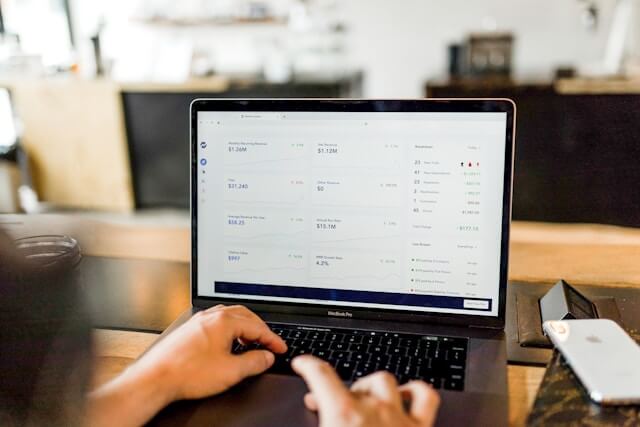
To truly understand your dropshipping earnings, you need to keep a close eye on several Key Performance Indicators (KPIs). These numbers give you a clear picture of your business’s health.
Here’s a quick rundown of the most essential metrics:
- Profit Margins: This indicates the percentage of revenue that turns into profit. Aim for a profit margin of at least 10% after all your costs.
- Average Order Value (AOV): Increase this figure by encouraging customers to purchase more expensive items or add more products to their cart.
Here’s a small table that outlines some important KPIs:
| KPI | Importance |
| Profit Margin | Reveals the profitability of each sale. |
| AOV | Helps to strategize on upselling and cross-selling. |
| Order Fulfillment Rate | Measures the efficiency of your shipping process. |
Monitoring these statistics can help you diagnose issues like low profitability or inefficient fulfillment systems. For instance, if you notice your profit margins are thin, you could adjust your pricing strategy or find ways to reduce costs.
Utilizing tools to track these metrics consistently will give you the data you need to make the most out of your dropshipping business. Always remember, informed decisions lead to higher profitability and a more successful dropshipping venture.
2. Keep Up with the Trends.
Staying current with trends is crucial to your success in dropshipping. As trends shape consumer interests, aligning your product offerings with what is in demand can significantly impact your earnings.
Identify Popular Products
Begin by tracking trending products. This can have a direct effect on what you decide to sell. For instance, the global dropshipping market is expected to grow substantially, with certain product categories leading the charge.
Leverage E-commerce Growth
With ecommerce projected to reach $3,178 billion in 2024, tapping into this expanding market by following ecommerce trends can give you a competitive edge.
Understand Your Audience

Millennials are the largest group of online shoppers; staying in tune with their preferences can inform your marketing strategies and product selection.
- Regularly check platforms like Google Trends.
- Analyze competitors to see what’s working.
- Engage with your audience on social media to learn their interests.
Adjust Quickly
Be agile. When you notice a change in what’s popular, be ready to adjust your store’s offerings. Fast reactions to trend changes mean you can capitalize on them before the market becomes saturated.
3. Learn to Negotiate with Your Suppliers.
When entering the dropshipping business, your profit margin can benefit significantly from learning to negotiate with your suppliers. Strong negotiation skills are necessary to secure better prices and terms, which, in turn, can enhance your earnings.
Conduct Thorough Research
Before you start discussions, it’s crucial to understand the market. Knowing the average cost of goods can give you leverage in negotiations. Knowledge about your supplier’s competitors can also serve as an advantage.
- Prepare Your Facts: You need clear data to back up your points.
- Know Your Numbers: Be familiar with the pricing of products similar to yours.
Define Clear Objectives
Be clear about what you want to achieve from the negotiations:
- Lower purchase prices
- Reduced minimum order quantities
- Faster shipping options
Build a Relationship
Creating a good rapport with suppliers can lead to long-term benefits. Regular communication and demonstrating that you value the business relationship can make future negotiations smoother and more fruitful.
Be Ready to Compromise
Negotiating is a two-way street. While you’re aiming to increase your profits, remember that your supplier is also running a business. Be open to concessions that can lead to a mutually beneficial arrangement.
Revisit Agreements
The business world changes rapidly. Re-evaluate terms regularly with your suppliers to ensure they still fit your needs and adjust as necessary.
Negotiating effectively isn’t just about getting lower prices, it’s about creating deals that boost your business’s bottom line without compromising quality or service.
Each successful negotiation can make a noticeable difference in what you earn, positioning you to reinvest in your business, expand your range, and increase your sales.

4. Compromise on Profit but Not on Quality.
When venturing into dropshipping, it’s tempting to cut costs to offer the lowest prices and boost your competitive edge. However, skimping on quality can backfire, damaging your brand’s reputation and customer loyalty.
Keep Quality High
Quality is paramount in securing repeat business. Customers who are happy with the quality of the product are more likely to make another purchase.
Ensuring quality can reduce your profit margins slightly, but the trade-off is worth it in the long run.
Focus on Customer Experience
You need to prioritize customer satisfaction over immediate profits. This means offering products that not only fit their needs but also delight them with their durability and functionality.
Calculate Margins Wisely
Accept lower profit margins initially for long-term gain. With a keen eye on product selection and cost management, your lower margins can gradually increase as your brand strengthens.
Optimize Costs
While maintaining high-quality standards, you can also look for other areas to optimize costs like marketing spend or operational efficiencies. Remember, a satisfied customer is likely to turn to word-of-mouth promotion, which is free and highly effective.
5. Have a Good Marketing and Pricing Strategy in Place.
To maximize your earnings as a dropshipper, you need a solid marketing and pricing strategy. Marketing draws customers to your offerings, while pricing ensures your profitability and competitiveness in the market.
Marketing
Begin by identifying your target audience and create marketing campaigns tailored to their interests and needs. Use:
- Social media to build brand awareness.
- Email marketing for personalized offers.
- Search engine optimization (SEO) to enhance online visibility.
Given the right approach, your marketing efforts can significantly increase traffic to your store, generating more sales.
Pricing Strategies
Your pricing strategy should balance profit margins with customer appeal. Consider the following:
- Competitive Pricing: Match or beat competitor prices to attract price-sensitive customers.
- Value-Based Pricing: Set prices based on the perceived value to the customer, factoring in quality and exclusivity.
- Psychological Pricing: Price products at $39.95 instead of $40 to make the cost appear lower.
For example, employing a fixed markup on cost for low-ticket items can simplify your pricing strategy and maintain consistent margins.
Bundle Pricing

Offering bundled products at a discounted rate can entice customers to purchase more, increasing your average order value. This tactic not only boosts sales but also improves the perceived value of the deal for the customer.
6. Sell through Multiple Sales Channels.
Maximizing your earnings as a dropshipper often hinges on diversifying where you sell your products. By tapping into multiple sales channels, you can reach a broader audience and leverage different platforms’ strengths.
Online Marketplaces
Sites like eBay and Amazon provide access to massive customer bases looking for a vast array of products. These platforms are often the go-to for online shoppers due to convenience and trust in the platform.
Your Own Website
Creating your own online store using platforms such as Shopify allows for brand building and direct customer relationships. This means you can tailor customer experiences and potentially increase profit margins without marketplace fees.
Utilize Facebook, Instagram, and Pinterest to showcase your products. With the rise of social commerce, these platforms enable you to tap into their existing networks and encourage direct sales through social media interactions.
Comparison Shopping Engines
Listing your products on sites like Google Shopping can make your items more discoverable and directly compare with competitors, potentially increasing visibility and sales.
To ensure success across multiple channels, maintain consistency in your product listings and pricing strategy. Properly managing inventory and ensuring a seamless customer experience is crucial regardless of the sales channel.
Remember, each channel will come with its own set of rules and fees, so factor these into your pricing and fulfillment processes.
7. Upsell and Cross-Sell.
In the dropshipping world, upselling and cross-selling are key strategies that can significantly boost your income. Here’s what you should know:

- Upselling is persuading customers to buy a more expensive, premium version of what they’re already interested in. For example, if a customer is looking at a standard laptop bag, you might upsell them to a premium bag with extra features.
- Cross-selling involves recommending related products that complement what the customer is buying. Say someone is purchasing that same laptop bag; you might cross-sell a protective laptop sleeve for additional security.
The power of these strategies lies in increasing the value of every sale. According to Shopify, when you effectively implement upselling and cross-selling, you shouldn’t increase the overall order cost by more than 25%.
Here’s a simple breakdown:
| Strategy | Example | Tip |
| Upselling | Premium laptop bag | Offer options that have clear advantages but keep the price hike within a reasonable range |
| Cross-selling | Laptop sleeve | Suggest items that are practical and enhance the use of the original product |
By using these approaches, you’re not only increasing your earnings but also improving the customer’s experience.
When customers feel they’ve received extra value, they’re more likely to return to your store, leading to increased revenue in the long run.
8. Consider Automation.
When you’re running a dropshipping business, automating aspects of your operation can be an effective way to increase your earnings.
Why Consider Automation?
- Time Efficiency: Automation tools sync directly with your supplier’s system, saving you substantial time and effort.
- Error Reduction: It minimizes the chance of mistakes in order processing and inventory management.
Key Areas for Automation
- Inventory Management: Keeps stock levels updated in real-time, preventing overselling.
- Pricing Updates: Adjusts your prices based on market trends and costs.
- Order Tracking: Provides up-to-date order status to customers, enhancing their experience.
Impact on Income
By using automation, dropshippers can focus on growth strategies like marketing and customer service, which can lead to higher profitability. Although setting up automation tools requires an initial investment, the long-term benefits often outweigh the costs.

Steps to Implement Automation
- Evaluate Your Needs: Assess which tasks require the most time and are prone to errors.
- Research Tools: Look for reliable automation software that fits your budget.
- Seamless Integration: Ensure the tools integrate smoothly with your supplier and eCommerce platform.
Remember, even though automation can boost your income, it’s crucial to balance the use of tools with hands-on management to maintain quality control over your business.
9. Focus on Branding.
Branding goes beyond just a name or logo; it encompasses your entire customer experience, from your website design to customer service, and most importantly, how your products are presented.
In the context of dropshipping, where products are usually generic, incorporating custom packaging and private labeling can create a unique identity.
These efforts can lead to increased customer loyalty and potentially higher profit margins, as customers are often willing to pay more for products that provide a branded experience.
- Custom Packaging: It’s an opportunity to showcase your brand’s personality. Imagine a customer receiving a package that looks distinctively yours. This is part of making an impression.
- Private Labeling: Slapping your logo on products is a step towards exclusivity. It tells customers that they can’t get this product just anywhere.
Branding can also aid in developing a brand purpose, which is your business’s reason for being beyond making sales. This could be tied to personal values or a particular lifestyle that resonates with your audience.
Establishing this connection can create a devoted customer base that sees your brand as a representation of their own values and beliefs.
Solid branding can not only help justify better pricing but can also enhance customer acquisition and retention — key components to increasing your bottom line.
10. Build Customer Loyalty.
In dropshipping, developing a rapport with your customers can significantly boost your earnings. Here’s how you can do it effectively:

Foster Trust
Reliability is key. Ensure orders are fulfilled promptly and customer service is responsive. This builds a dependable brand reputation.
Offer rewards: Implement a loyalty program to encourage repeat purchases. For instance, a “buy 10, get 1 free” offer can compel customers to come back.
Engage through Email
Regular newsletters that are not just promotional but also informative can keep your brand top-of-mind for customers.
Communicate value. Share insights on products or special deals tailored to customer preferences. Personalize your approach to show that you value their business.
Adjust based on feedback. Listen to customer concerns and proactively make changes. This demonstrates that their opinions matter to you, solidifying their loyalty.
Remember:
- Loyal customers can become brand advocates, referring others and driving more sales.
- Successful loyalty programs can result in customers spending more over time.
By taking these steps, you position your dropshipping business for sustainable growth, as loyal customers often translate to a steady income stream.
Frequently Asked Questions
Before you dive into the world of dropshipping, you likely have several questions about the potential earnings and what it takes to succeed. Here, we address some of the most common inquiries, offering you clear insights grounded in current data.
Is Dropshipping Worth It for Beginners?
Dropshipping can be a worthwhile venture for beginners, particularly if you have limited capital and want to test the eCommerce waters without maintaining inventory.
However, your success depends on factors like selecting the right niche, effective marketing strategies, and staying informed about industry trends.
What Is a Good Profit Margin for Dropshipping?
A good profit margin for dropshipping varies by product, but typically, a margin between 10% to 30% can be considered healthy.
It’s important to factor in marketing costs and platform fees to determine your potential profit accurately.
Beginners should aim for a margin that makes the business worthwhile after all expenses.
How Much Money Do You Need to Start Dropshipping?
Starting a dropshipping business can require minimal upfront investment, often around $100 to $500.
This covers initial costs such as setting up your website, acquiring a domain name, and investing in initial marketing efforts.
Keep in mind, however, that scaling your business will require continued investment.
How Long Should I Wait until the First Dropshipping Sale?
The time before the first sale can vary widely, with some sellers experiencing success within a few days and others taking months.
You’ll need to focus on optimizing your online store and driving traffic through marketing efforts to shorten this timeframe.
Persistence and data-driven marketing are key to making that first sale.
Can Dropshipping Make You Rich?
Dropshipping has the potential to generate significant income, with some experienced dropshippers earning between $10,000 to $50,000 monthly.
While it’s not guaranteed, and only some reach these levels, dropshipping can be quite lucrative with the right niche, strong marketing, and an effective business strategy.
Remember, success in this field requires hard work, dedication, and the ability to adapt to changing market conditions.
Summing Up: What You Can Expect to Make as a Dropshipper
When embarking on a dropshipping journey, your potential earnings can vary widely. Initiating a successful dropshipping business depends on niche selection, competition, and your ability to effectively market and build your brand.
Some dropshippers make hundreds of dollars a month, while others scrape for pennies and make little profit. Either way, succeeding as a dropshipper requires immense hard work, persistence, and dedication.
Identifying profitable niches and creating a unique marketing strategy are essential to driving sales. Most importantly, you also need a reliable supplier who understands your product requirements.
Fortunately, this is where NicheDropshipping can lend you a helping hand.
We can source your desired products at competitive prices and tailor the packaging to your needs. All you have to do is submit a sourcing request and let our dedicated agents handle the rest.
